How Big Is Your Kraken?
"Let's build a work-around!"
“If you need help from people outside your team do you get it swiftly?”
The key part is swiftly.
This is one of the simplest questions you can ask to find out whether your organization struggles to collaborate effectively.
Swift help is a sign of decent collaboration in your teams. Slow, difficult or even no help at all means there is poor collaboration in your teams.
Why does collaboration suffer in some companies? Most of the time it’s due to the Kraken.
As companies grow, they invariably create an organizational system that’s counter-productive for teams. The Kraken actively works to sabotage and strangle all collaboration at the lowest levels in an organization.
The reason for this is simple: as you add more people, you create more distance between leaders and their teams. Teams is where the magic happens of doing work and producing the results we want. As you grow you will have more and more people in power who don’t have a clue what’s really going on in their teams.
As leaders become further removed, they become disconnected and detached from the work. As a result of the distance their distrust in the team increases.
Leaders sometimes want to be close to the work, but they are unable to be close to the work. They settle for a proxy: the hallucination of being close to the work by examining paper victories produced by the teams that generate the illusion of control.
When stuff goes wrong, they don’t fully understand why it happened and will try to regain the illusion of control. But because they don’t fully understand it, they will propose solutions that result in even more pretty paper victories but that completely miss the point. Their desire for paper victories is actively undermining the collaboration in an organization.
As a consequence of leaders being far removed from the work the Cycle of Distrust begins kicking in:
Powerful people who are removed from the reality of the teams will optimize for what’s best and most convenient for their reality: receiving the illusion of control from their teams through paper victories.
Distrust Breeds Distrust
The end result is an organizational system that’s founded on distrust. As the Cycle of Distrust shows: distrust breeds more distrust. They will demand more PowerPoints, Excel sheets and made-up business cases to make their life easier.
Managers don’t want to prevent receiving pesky questions from the higher-ups. Nothing is better at doing that than producing paper victories - stuff that looks great on paper. They want their leaders to feel great about the work they are doing. Because that means their life will be easy.
I want to stress I’m not blaming them for this happening. It’s a systemic problem that happens as companies grow. Replacing all your leaders will produce similar outcomes because the original system will remain in place.
Communicating a pretty illusion that neatly fits on a slide deck is far easier for them than to communicate the actual grim and messy reality of the work.
Nobody asks questions if it looks great on paper. As a result, managers usually optimize for paper victories, not for making it easier for teams to produce great work that results in real victories.
What’s the end result of the Cycle of Distrust and looping through the hamster wheel for ever more effectively producing the illusion of control?
The Kraken grows because it feeds on distrust.
The end result is Brittle Teams that are busy feeding the Kraken and actively trying to dodge its tentacles, while also trying to get shit done at the same time. It’s as crazy as it sounds.
Getting anything done is extremely difficult the more brittle your teams are. The more tentacles are present, the more difficult collaboration and getting anything done becomes. If your Kraken is sufficiently large, changing the color of a button may take 3 months.
When your organization has a large kraken, you have brittle teams that are disconnected from the work and the results you want, because they are mostly dealing with internal bureaucracy: the tentacles of the kraken.
The Kraken Shifts Your Teams From Ownership to Orchestration
We can visualize the the impact of a growing Kraken as follows:
When the Kraken is small, teams have ownership over the work and the results you want to achieve. Teams are highly elastic and flexible towards the work. It’s easy to get things done and get help from other teams.
As the kraken grows, there is a gradual shift from Ownership to Orchestration. The teams use up all their elasticity to resolve internal organizational obstacles. Instead of being elastic, they become brittle: they are mostly busy dealing with the inner workings of the company: feeding, fighting and dealing with the Kraken.
So when another team asks for help, the team is already over-stretched and over-taxed. All teams have been overrun and overwhelmed by the tentacles of the Kraken and can’t help you.
I once worked at an organization, whenever we needed help from another team, they would say: “Can we come up with a workaround? I hate working with other teams and it will take months before they help us. If they even help us at all.”
Sometimes even rebuilding (parts of) their whole system was on the table.
It was THAT bad.
As the Kraken grows, what is revealed is far more reliable than what is declared. Don’t trust what people say and definitely don’t trust what’s in paper victory plans.
The Kraken Optimizes For Being Fed
If the Kraken is sufficiently large enough people become scared to tell the truth. They might be snatched by the Kraken for snitching. Teams will optimize for pleasing their managers, not for showing the ugly reality of the work.
Our leaders were clueless that our organization sucked so much that workarounds guaranteed to bring everything to a grinding in the future were on the table. Those shoddy workarounds were considered more practical and effective than the prospect of having to collaborate with each other.
The honest truth is that even if we told our managers, they wouldn’t really care. They were blinded by the tentacles of the Kraken. All they cared about was feeding the Kraken. What mattered was their shiny paper victory plans tied to their department bonuses.
They became blind to the problems of the system because they had been fully consumed by the Kraken.
Escaping the Kraken
Remember: better coordination doesn’t fix poor collaboration.
You will never get ownership by trying to orchestrate the Kraken away. This is why Scaled Agile Framework (SAFe) is never a good option. Any scaling framework that tries to improve orchestration will increase distrust and make your Kraken grow even more. This will make it even harder to fix your problems as you will have more tentacles to deal with.
We deserve better. We need more leaders with guts that are not scared to chop off the tentacles of the Kraken.
What makes it extremely difficult is that the system fights back. Even if there is a someone with the guts to chop off tentacles, the Kraken will try to get rid of them.
We want leaders know what’s really going on in the teams and care about bringing them as close as possible to the work and the results we want.
Not leaders that are so clueless that they consider Scaled Agile Framework (SAFe) to be a viable option. Yes, Dutch government, I’m talking about you and all the crazy self-invented variants of SAFe like SABel (SAFe bij de BELastingdienst).
It’s time to step up your game and stop with the bureaucratic cosplay. Have some more guts and begin with chopping off the tentacles of the Kraken.
You better start now, because you’ve got a gazillion tentacles to chop.



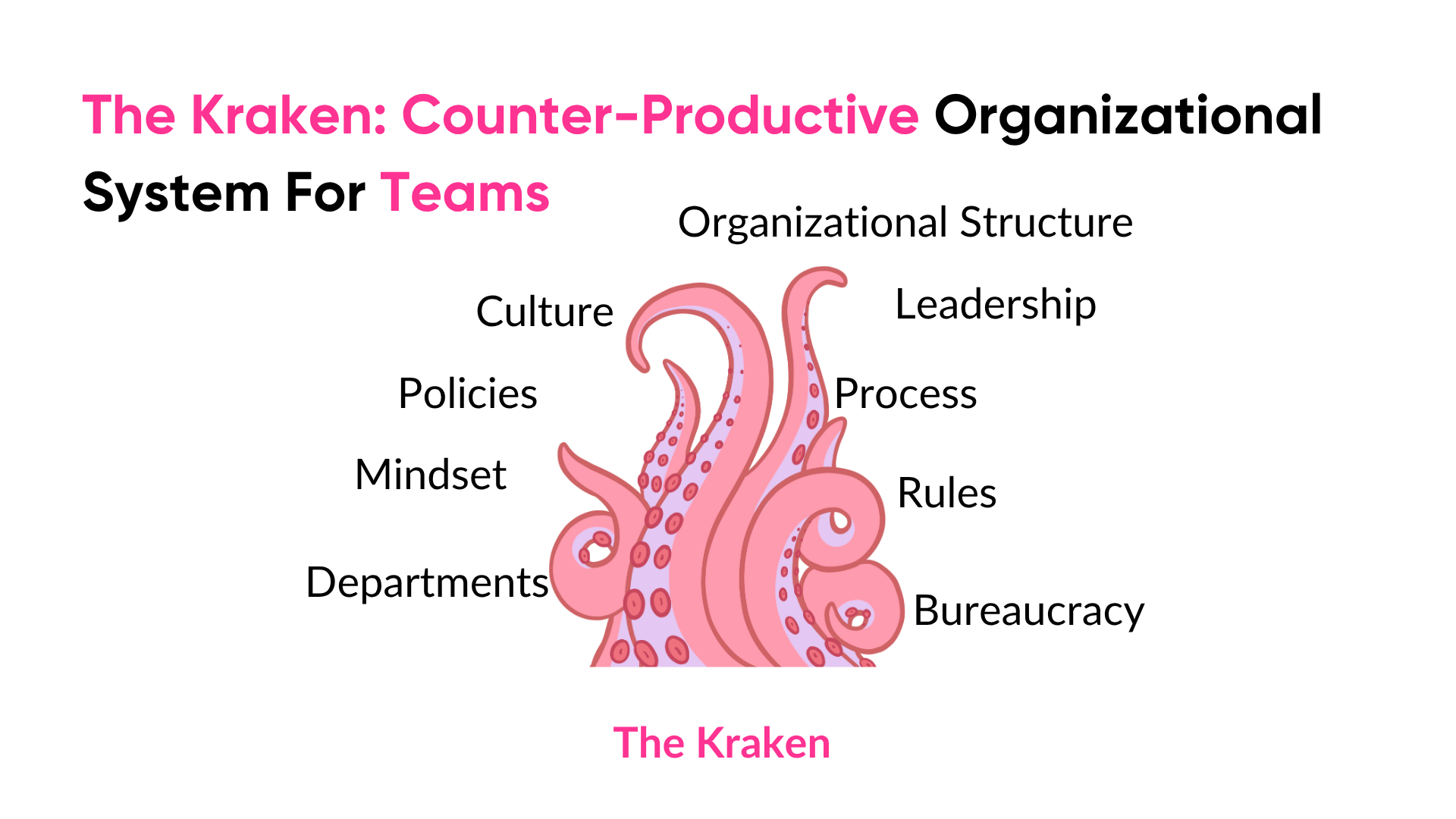
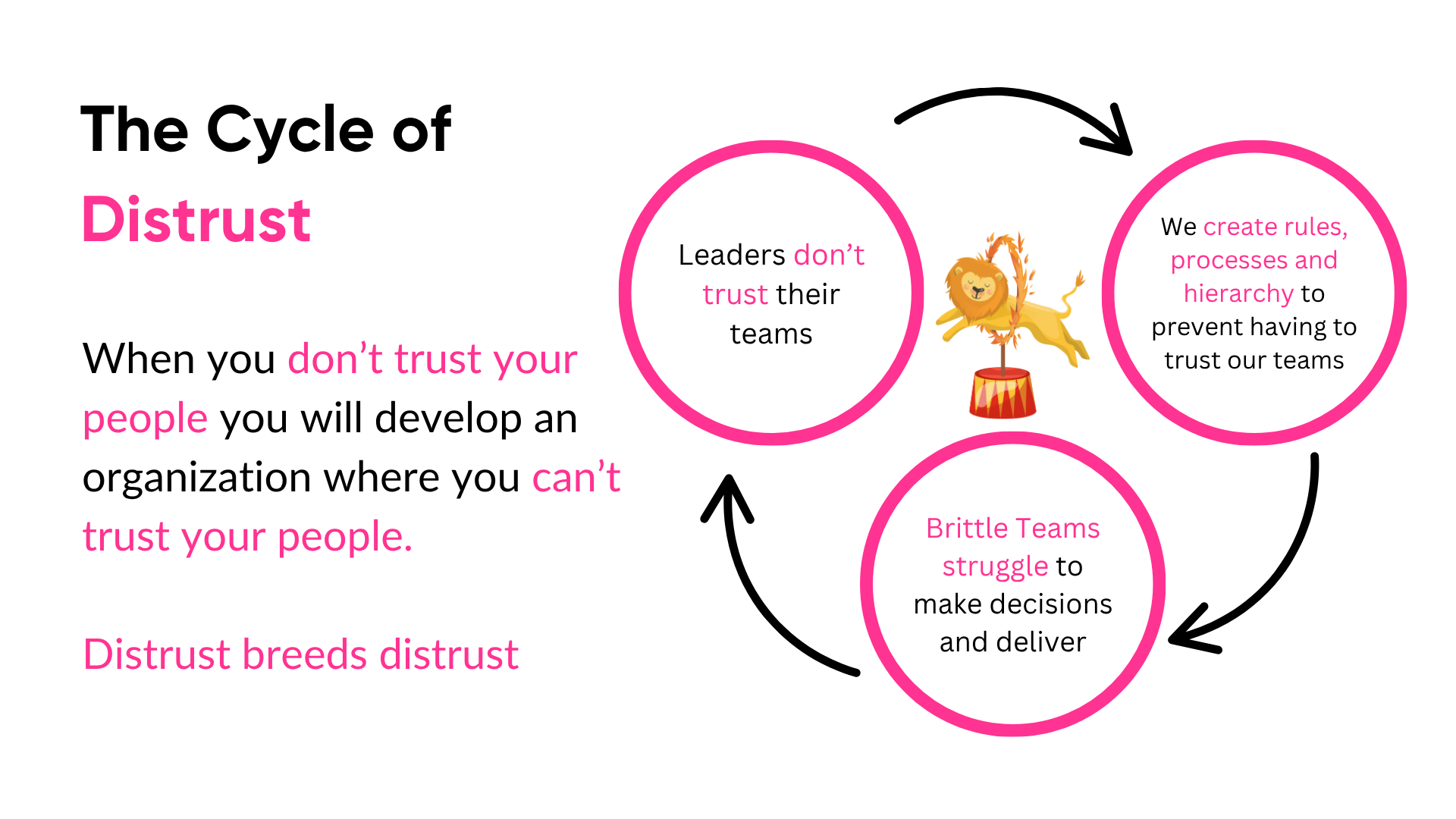
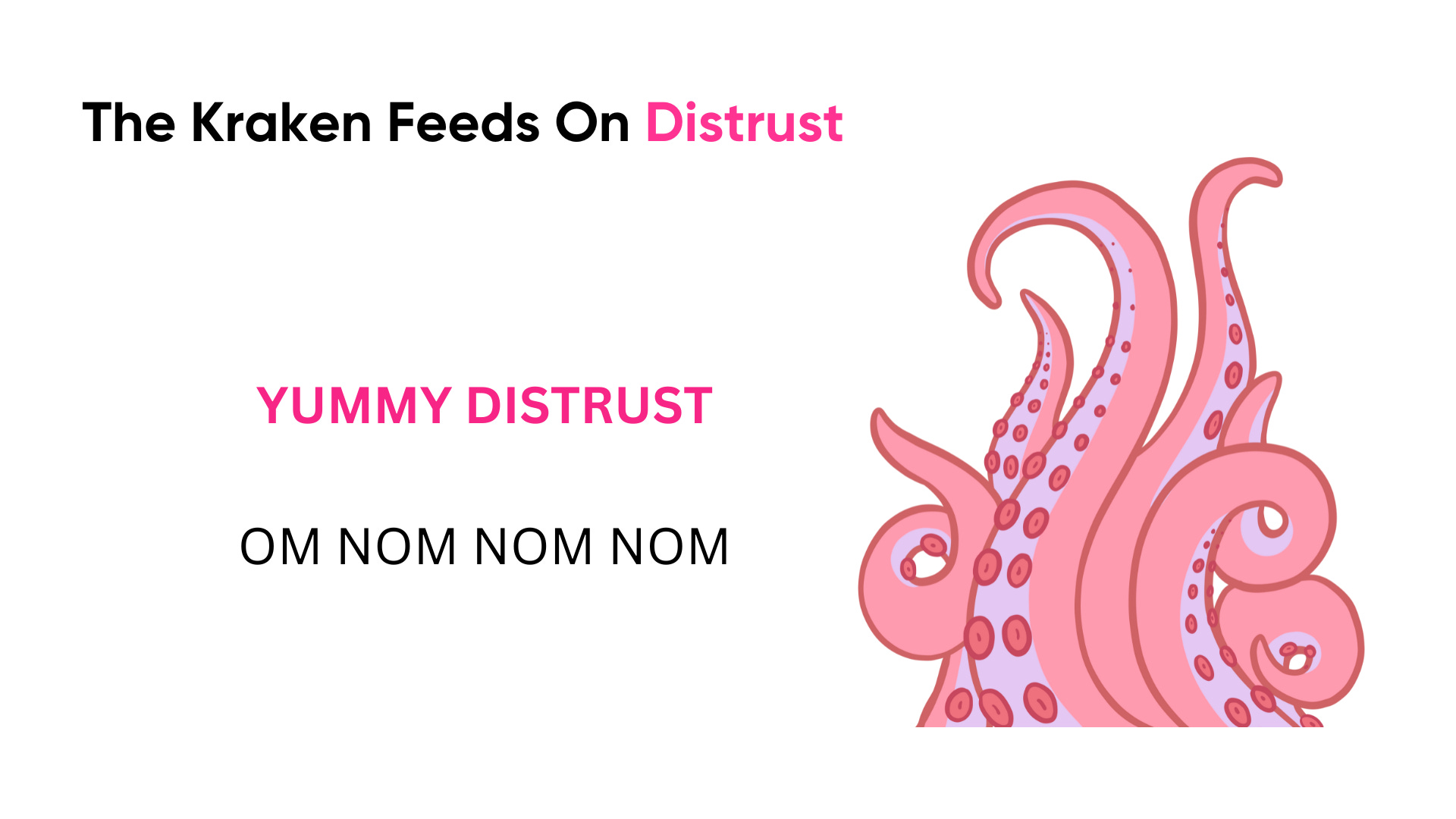
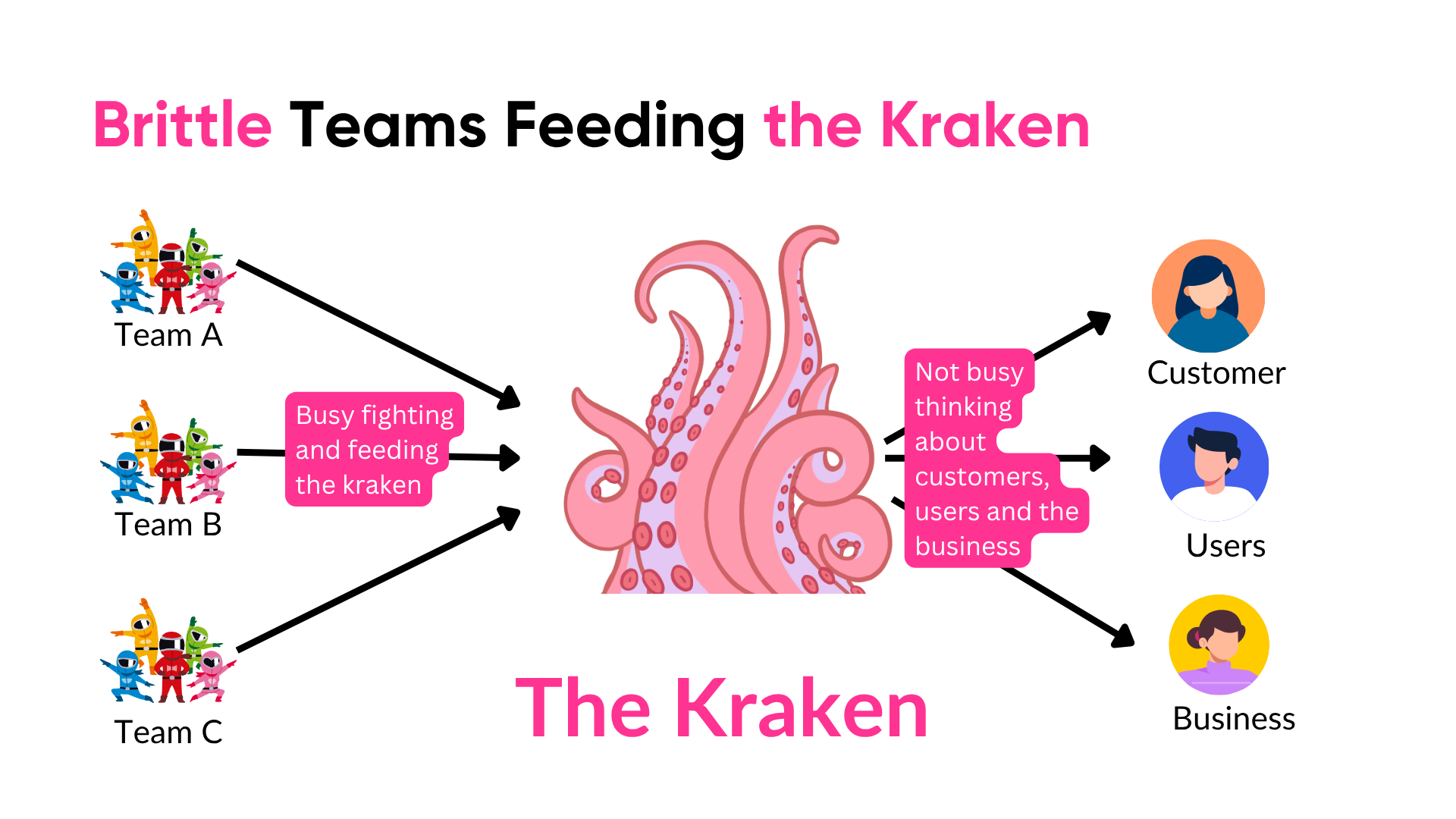
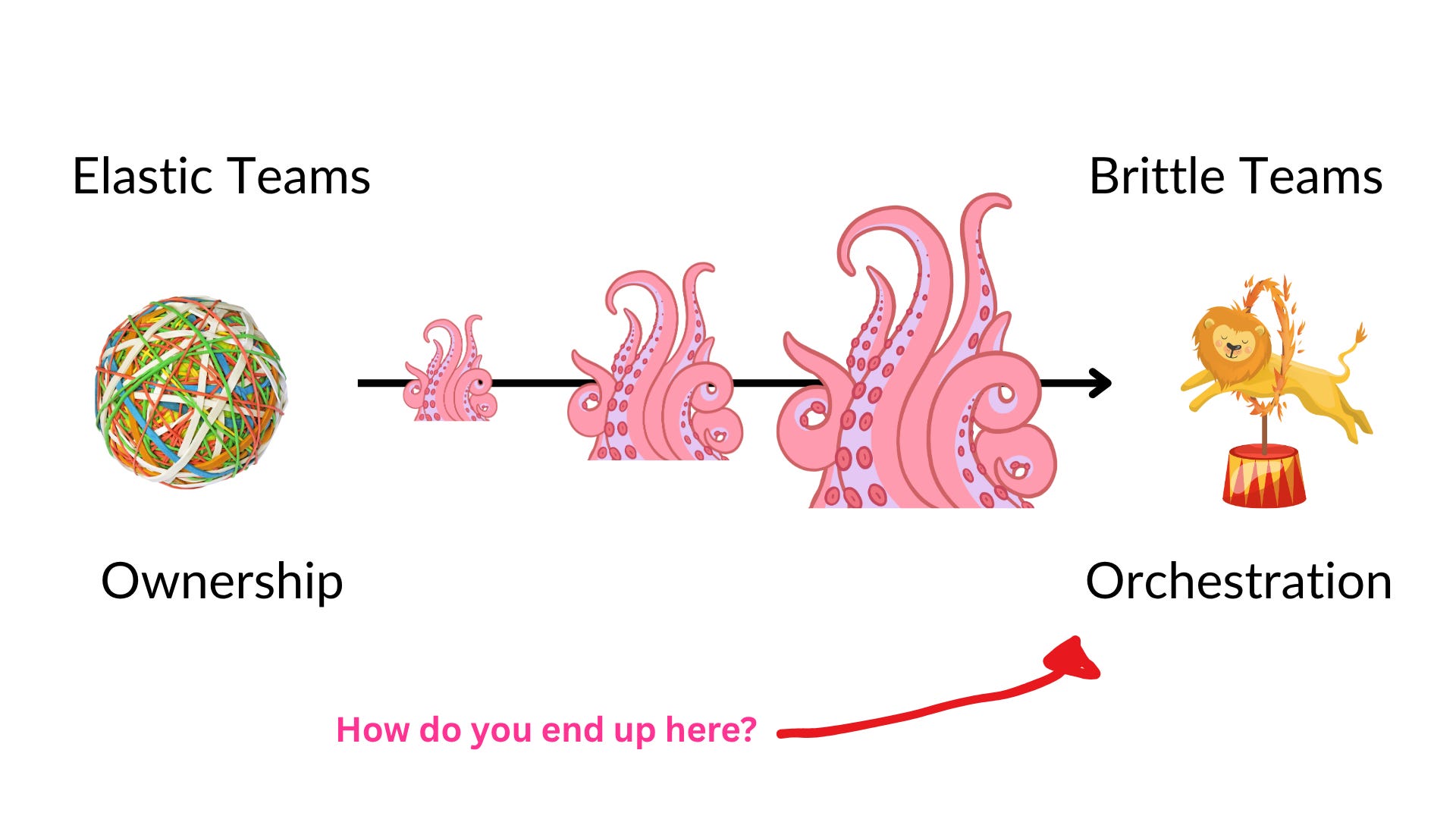
Don't forget the incentives - specifically money - feed or starve the Kraken's development. The Kraken grows enormously if the environment rewards corporate theatre aka bullsh*t jobs.
Raw and honest. Thanks for saying it for what it is!